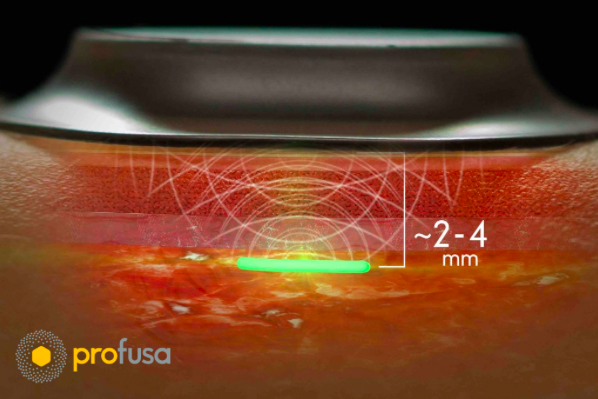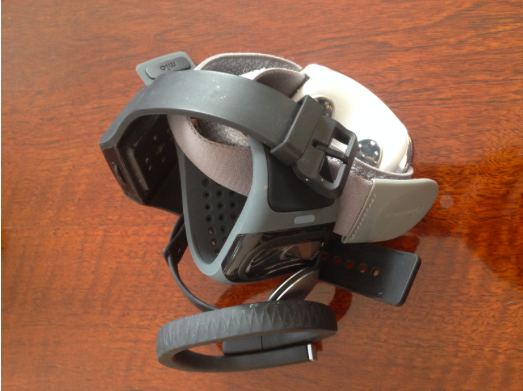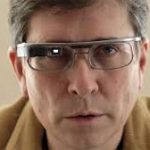It’s been over two years since I penned this article in Forbes and I believe that the story is even more relevant today. And simply put, it’s coming down to one simple phrase–DATA TRUMPS THE DEVICE. While many new trackers and devices are making their way to the marketplace, it’s my opinion that a central driving aspect of these innovation are based around algorithmic analysis. That’s the big news. The physical acquisition of these data are, in many instances, becoming less and less significant.
However, we do see new and exciting “micro and nano-sensors” that combine data acquisition with a size that is barely visible. An example is Profusa

This innovative company directly measures tissue perfusion directly from the subcutaneous space to provide a real-time perspective on tissue health and viability. And this is only the first step. I expect that Profusa will lead the charge for a variety of micro-devices that live innocuously and benignly under the skin.
Additionally, the advances in analytics and data storage will allow that vast amounts of data to be stored and processed–making them less a “technological pollutant” and more a critical aspect of managing health and wellness.
Yes. I did say nothing.
So, this is my take of the famous Seinfeld episode about nothing. And in this case it applies to digital health and the ubiquity of wearables. It’s my point here that all this commotion over wearables is a bit much. Of course, it might be a necessary device to grow awareness, but I think the future of digital health is best captured with one word–nothing.
Now, nothing doesn’t exactly mean nothing. Of course the evolution of technology will create a tsunami of stuff–from gadgets to data–but the magic will be when it all just goes away. And what’s left is that magic of transparent technology that gets a step ahead of us and transforms our lives.
Start with WEARABLES
We all have then. Those huge, bulky devices that we (more often than not) forget to put on, charge and download. Personally, I hate them (well, again I’m playing with language here.) Well, I really have more of a love / hate relationship with them. Wait. No, I hate them. The dirty secret is the, at least from my perspective, is that wearable compliance is not very good. And it might even mirror that non-compliance seen in those things we call pills.
Move to DERMALS
Now we have a decal, temporary tattoo or some other “body mark” that makes the wearable seem nothing more than funky jewelry. And that’s still a cool place to be. But interesting new dermals will be used in long-term and short term scenarios. For example, the temporary dermal patch might be used to track body temperature (infection) when someone is treated with an antibiotic. And aren’t tattoos all the rage?
Swallow hard, it’s CONSUMABLES
Thanks ProteusHealth and some of the other big thinkers out there. So, the future might just take us beyond sticking something on your skin. Nanotechnology will find its way into your body via a route that makes today’s “implantable” seem almost horrific. I have to cancel that colonoscopy.
Then NOTHING. Just your life
Of course, wearables, dermals and consumables will have a place in our digital health armamentarium of the future. From cost considerations to practicality, my Fitbit and Basis might stay in vogue–like my Rolex. But (like my Rolex) they won’t keep the best time (or data). The future belongs to the sensor that you don’t notice. It’s the sensor that’s built into your life and not attached to it. It’s the sensor that’s build into your bathroom mirror that tracks your ECG with diagnostic accuracy. It’s the sensor that’s build into your toothbrush that looks for cavities and the potential for systemic bacterial contamination that begins in your mouth. It’s the sensor that you stand on (build into your tile floor) that measures your weight and body fat. It’s the sensor in your toilet that measures and tracks a host of body chemistries–from glucose to blood. It’s the sensor that’s build into the steering wheel of your car that tracks blood sugar and pulse.
It’s these sensors that you don’t even notice…until the SENSOR wants you to.
The future of digital health my belong more to the companies like Kohler, KitchenAid and Ford. These companies now own less a product and more a room or experience. And as digital health searches for the place to belong, it will find unexpected companions and end up in places that we never imagined.
So, it started with this big idea around wearables. And yes, they are cool and even a bit fashionable. But they are doomed. And their loss can be the gain (and transformation) of digital health.
Author’s Bio: John Nosta (@JohnNosta ) DIGITAL HEALTH Evangelist, he is the Founder of NOSTALAB- a digital health think tank with a focus on health, medicine and technology. His current passion is to advance the role of social media and technology in healthcare. He is currently the #1 Kred-ranked health influencer and in the top .01% of influencers in marketing, health, doctors and social media.






